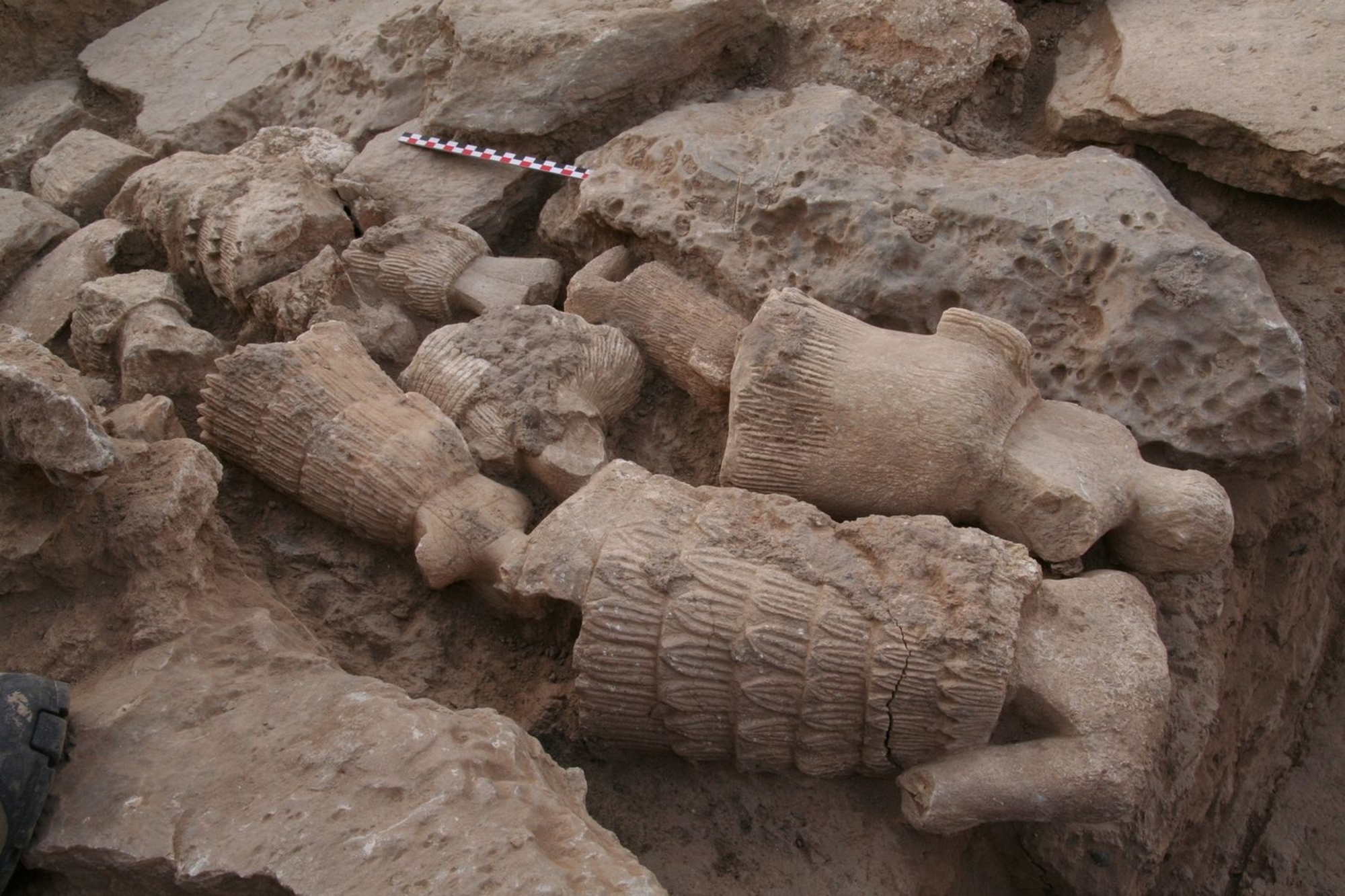
- Home
- Explore the site
- The Mariotes and their images
Except the palace, we know little about the people who lived in Mari. As early as 2500 BCE, they had Semitic names.
Stereotypical images of an elite
Several dozen inscribed statuettes, broken by soldiers from Akkad in 2290 BCE, depict high-status figures at prayer, including members of the royal family, public servants, priests and priestesses. Statuettes with typical smiles, dressed in a woollen mantle with long tufts, known as kaunakes, depict a social elite composed of the king's servants, who were often pious managers of the city’s affairs.
Panel fragments with inlaid mother-of-pearl found in the rubble of City II come from decorative panels depicting stereotypical military or ritual scenes. They provide a valuable insight into the highly formalised social practices of an elite that celebrated its ability to ensure the security of a city engaged in constant rivalry with its neighbours.
Royal public servants and priests ensured the smooth running of a bureaucratic system that drained the resources of a territory which is difficult to gauge, in order to build and run a series of large houses, including the great palace.
The people of Mari
Apart from these conventional scenes, we have little information about the people who lived in the city and surrounding countryside. In the valley, in the</span> 18th century BCE, sedentary farmers, who were called Akkadians, cohabited with semi-nomadic pastoralists and their herds who lived from centuries-old transhumance between steppe and valley. They were called “Amorites”, who, in texts found in the great palace, called themselves “sons of the right” and “sons of the left”. It is hard to estimate how many people lived in the city, but they were probably a few thousand.





